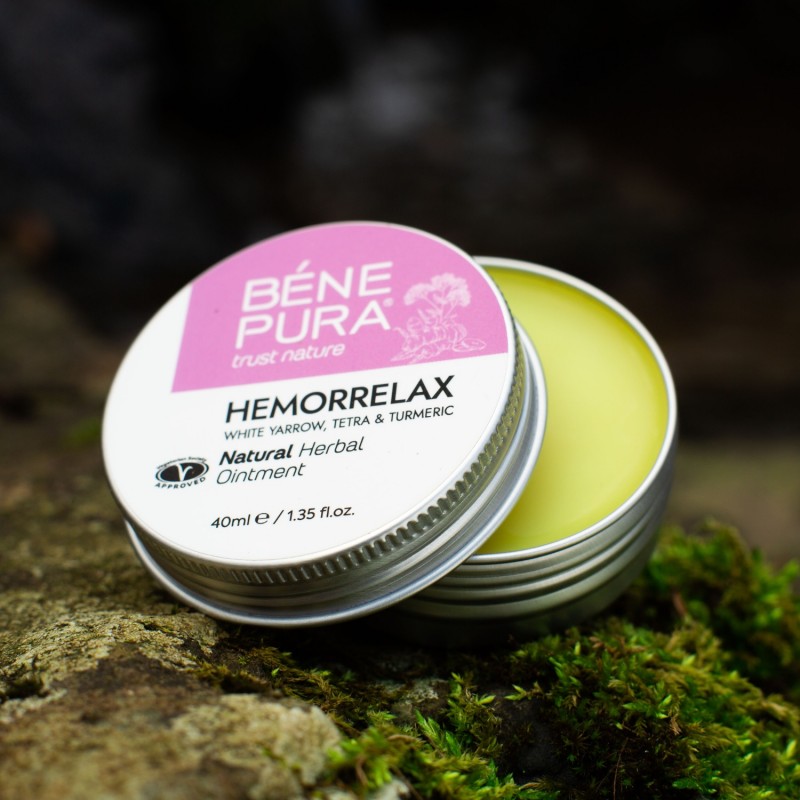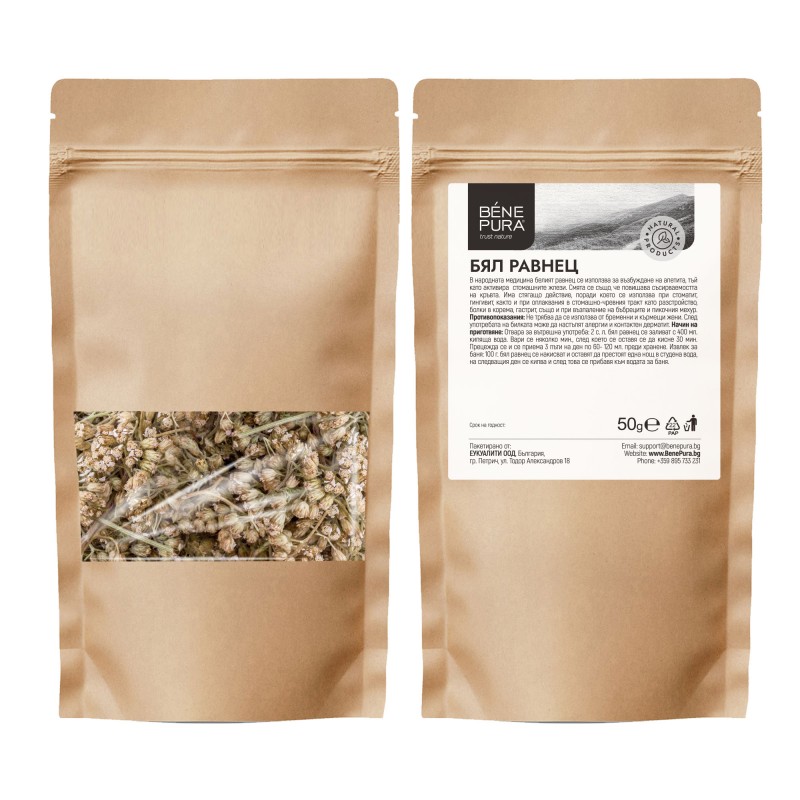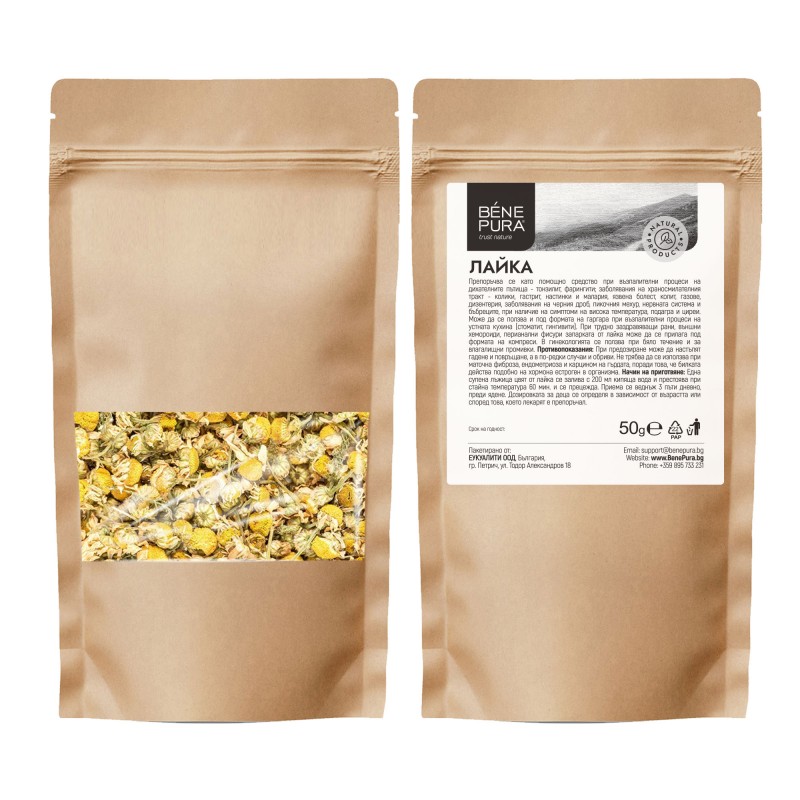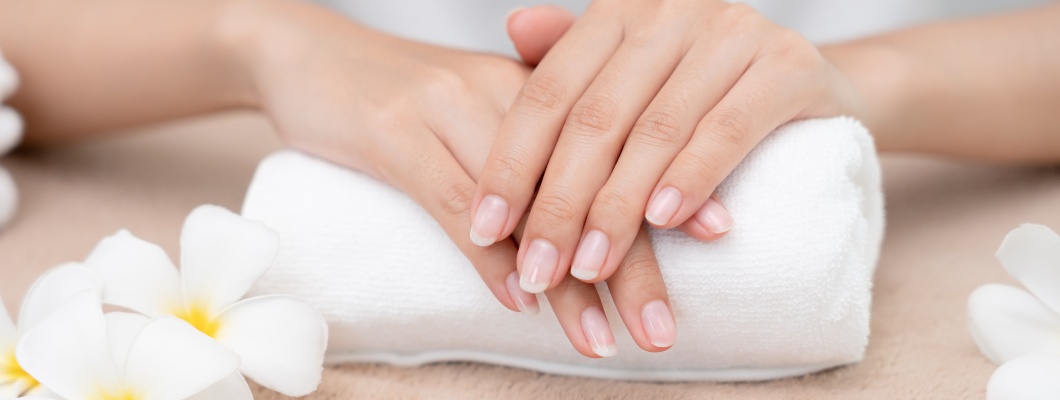What are the 10 Best Herbs for Treating Hemorrhoids?

Hemorrhoids are a common problem that can cause great discomfort and pain. Fortunately, nature has gifted us with a multitude of herbs that can help relieve symptoms and treat Hemorrhoids.
In this article we will look at the best herbs for Hemorrhoids and how they can be used for optimal results.
Table of Contents
1. White Yarrow
How does Yarrow help with Hemorrhoids?
White Yarrow contains a variety of active ingredients including flavonoids, tannins and salicylates, which have anti-inflammatory and astringent properties. These ingredients help reduce inflammation, constrict blood vessels and stop bleeding, making it ideal for treating Hemorrhoids.

Different ways to use Yarrow for Hemorrhoids
Yarrow tea
Yarrow tea is one of the simplest and most effective ways to use it.
- Pour 1-2 teaspoons of dried yarrow flowers or leaves with hot water;
- Let it steep for about 10-15 minutes;
- Strain and drink 2-3 cups a day.
The tea helps reduce internal inflammation and aids circulation.
Compresses with yarrow
- Make yarrow tea and let it cool;
- Soak a clean gauze or cotton cloth in the tea and apply it to the Hemorrhoids for about 15-20 minutes.
This procedure can be repeated several times a day to relieve inflammation and pain.
Sitz baths with yarrow
Add a few cups of yarrow tea to a bath of warm water and sit in it for about 15-20 minutes. A yarrow sitz bath helps relieve discomfort and help heal Hemorrhoids.
Yarrow ointments and creams
Ointments and creams containing yarrow extract can be applied directly to Hemorrhoids to relieve inflammation and speed healing. Apply the ointment two to three times daily to the affected area.
2. Turmeric
How does turmeric help with Hemorrhoids?
Turmeric contains curcumin which has strong anti-inflammatory, antimicrobial and antioxidant properties. Curcumin helps reduce inflammation, relieve pain and prevent infections. It promotes tissue healing and may help shrink Hemorrhoids.

Different ways to use turmeric for Hemorrhoids
Turmeric paste
Turmeric paste is an easy and effective way to apply it topically.
- Mix one teaspoon of turmeric powder with a little water or coconut oil to make a paste;
- Apply the paste directly to the Hemorrhoids and leave it on for 15-20 minutes, then rinse with warm water;
- Repeat the procedure twice a day.
Turmeric capsules and tablets
Turmeric is also available in capsule and tablet form that can be taken internally. These supplements help reduce inflammation and improve overall health. Follow the manufacturer's recommended dosage or consult a doctor for the appropriate dosage.
Turmeric tea
Making turmeric tea is another way to use it internally.
To make tea:
- Pour one teaspoon of turmeric powder with hot water and let it steep for about 10 minutes;
- Strain and drink 1-2 cups a day.
Homemade turmeric ointment
You can make a homemade ointment by mixing turmeric powder with coconut oil or aloe vera gel. Apply the ointment to the Hemorrhoids twice a day to relieve pain and inflammation.
3. Sumac
How does sumac help with Hemorrhoids?
Sumac contains tannins, which have a strong astringent effect on the skin and mucous membranes. This helps reduce inflammation, constrict blood vessels and relieve itching and pain. Sumac also has antiseptic properties that help prevent infections in the affected area.
Different ways to use sumac for Hemorrhoids
Sumac decoction
Most often, sumac is used in the form of a decoction.
To prepare the decoction:
- Pour 1-2 tablespoons of dried sumac leaves or bark with hot water and let it steep for about 10-15 minutes;
- Strain and use the decoction to wash the affected area two to three times a day.
Compresses with sumac
- Prepare a strong decoction of sumac and let it cool;
- Soak a clean gauze or cotton cloth in the decoction and apply it to the Hemorrhoids for about 15-20 minutes.
Sitz bath with sumac
Add a few cups of sumac decoction to a bath of warm water and sit in it for about 15-20 minutes. A sitz bath with sumac helps relieve discomfort and help heal Hemorrhoids.
Ointments with sumac
Sumac ointments can be applied directly to Hemorrhoids to relieve inflammation and speed up healing. Apply the ointment two to three times daily to the affected area.
4. Calendula
How does calendula help with Hemorrhoids?
Calendula contains active ingredients such as flavonoids, saponins and triterpenoids, which have powerful anti-inflammatory, antiseptic and healing properties. These components help reduce inflammation, relieve pain and accelerate the tissue healing process.
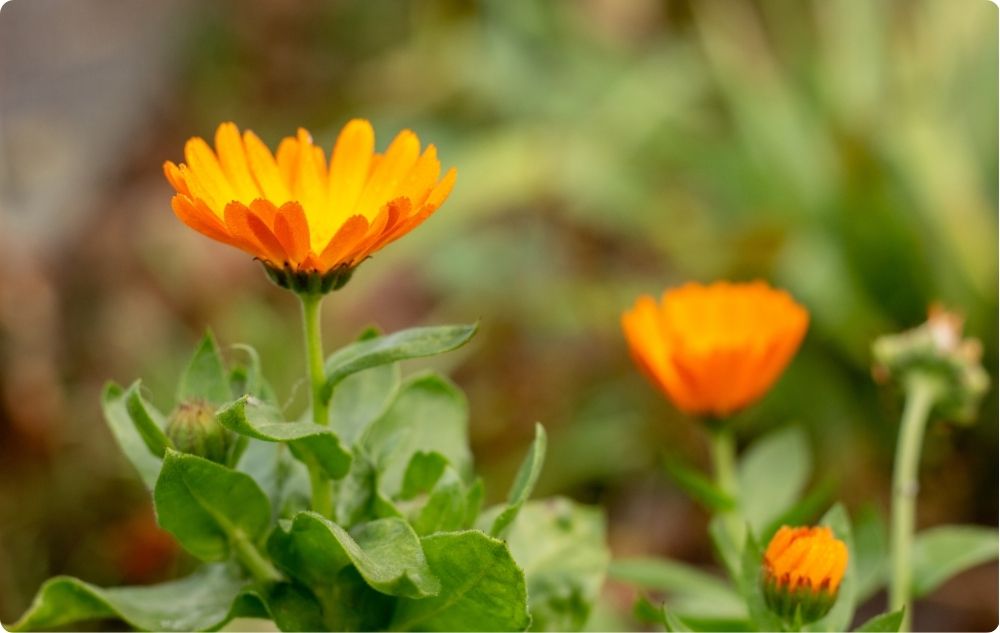
Different ways to use calendula for Hemorrhoids
Calendula ointment
One of the most common ways to use calendula is as an ointment. Apply calendula extract ointment directly to the Hemorrhoids two to three times daily. This will help reduce inflammation and relieve pain.
Calendula tea:
Calendula can also be used in the form of tea.
To make tea:
- Pour 1-2 tablespoons of dried calendula flowers with hot water and let them steep for about 10 minutes;
- Strain and drink 2-3 cups a day.
Calendula compresses
Make calendula tea and let it cool. Soak a clean gauze or cotton cloth in the tea and apply it to the affected area for about 15-20 minutes.
Calendula Sitz Baths
Add a few cups of calendula tea to a warm bath and sit in it for about 15-20 minutes. Calendula sitz baths help relieve discomfort and speed up the healing of Hemorrhoids.
5. Witch Hazel
How does witch hazel help with Hemorrhoids?
Witch hazel contains tannins, which have an astringent effect on the skin and blood vessels. This helps shrink Hemorrhoids, reduce inflammation and relieve pain. Witch hazel has antiseptic properties that help prevent infections in the affected area.
Different ways to use witch hazel for Hemorrhoids
Topical application of liquid extract
Witch hazel comes in the form of a liquid extract that can be applied directly to Hemorrhoids. To use the liquid extract, soak a cotton ball or gauze with witch hazel and apply it to the affected area.
Witch hazel wipes
There are ready-made wipes that can be used to clean and soothe Hemorrhoids. They are convenient to use and can be carried anywhere. Use the wipes after each bowel movement to clean and relieve symptoms.
Homemade witch hazel compress
To make a witch hazel compress, mix liquid witch hazel extract with a little water and soak a gauze or cotton cloth in it. Place the compress on the Hemorrhoids for about 15-20 minutes.
Sitz bath with witch hazel
Add 1-2 cups of witch hazel to a bath of warm water and sit in it for about 20 minutes. A witch hazel bath helps reduce inflammation and soothe pain.
6. Tea tree
How does tea tree help with Hemorrhoids?
Tea tree contains compounds that have antiseptic, anti-inflammatory and antimicrobial properties. These properties help reduce inflammation, relieve pain and prevent infection in the affected area.
Different ways to use tea tree for Hemorrhoids
Topical application of tea tree oil
The simplest way to use tea tree oil is through topical application. Always dilute tea tree oil with a carrier oil (such as coconut or olive oil) before use to avoid irritation. Mix a few drops of tea tree oil with a tablespoon of carrier oil and apply directly to the Hemorrhoids with a cotton swab.
Sitz bath with tea tree oil
Add a few drops of tea tree oil to a warm bath and sit in it for about 15-20 minutes. Sitz baths help relieve inflammation and pain, as well as maintain hygiene in the affected area.
Tea tree oil compresses
For a tea tree oil compress, mix a few drops of the oil with a carrier oil and soak a clean gauze or cotton cloth in the mixture. Place the compress on the hemorrhoids for about 15-20 minutes.
Homemade ointments and creams
You can make a homemade cream by mixing tea tree oil with coconut oil and aloe vera gel. Apply the cream to the Hemorrhoids twice a day to relieve symptoms and promote healing.
7. Aloe Vera
How does Aloe Vera help with Hemorrhoids?
Aloe Vera contains numerous active ingredients that have powerful anti-inflammatory, antiseptic and healing properties. They help reduce inflammation, relieve pain and speed up the healing process.
Different ways to use Aloe Vera for Hemorrhoids
Applying pure Aloe Vera gel
The easiest way to use Aloe Vera to treat Hemorrhoids is to apply the pure gel directly to the affected area. Cut a leaf from the plant, squeeze out the gel and apply it gently to the Hemorrhoids.
Aloe Vera compresses
Soak a clean gauze or cotton ball in Aloe Vera gel and apply it to the Hemorrhoids for about 20 minutes. This procedure can be repeated several times a day.
Frozen Aloe Vera gel cubes
For additional pain and inflammation relief, you can freeze Aloe Vera gel into ice cubes. Place the frozen cube directly on the Hemorrhoid for a few minutes. The cold will help constrict blood vessels and reduce inflammation.
Homemade Aloe Vera cream
You can make a homemade Hemorrhoid cream by mixing Aloe Vera gel with coconut oil and a few drops of lavender essential oil. Apply the cream to the affected area twice a day.
8. Horse chestnut
Horse chestnut is known for its properties in improving blood circulation and strengthening blood vessels. It is particularly useful in treating Hemorrhoids due to its venotonic action, which helps reduce inflammation and pain.
How does horse chestnut help with Hemorrhoids?
Horse chestnut contains the active ingredient escin, which has powerful anti-inflammatory and venotonic properties. Escin helps constrict blood vessels, reduces inflammation and promotes blood circulation. This makes horse chestnut effective in treating Hemorrhoids by reducing swelling and relieving pain.

Different ways to use horse chestnut for Hemorrhoids
Creams and gels with horse chestnut
Horse chestnut is widely available in the form of creams and gels that can be applied directly to the Hemorrhoids.
Horse chestnut tincture
Horse chestnut tincture can be taken internally or used for compresses. For compresses, mix the tincture with a little water, soak a gauze and apply it to the Hemorrhoids for 15-20 minutes.
Horse chestnut capsules and tablets
Horse chestnut is also available in capsule or tablet form that can be taken internally. These supplements help improve blood circulation and strengthen blood vessels. Follow the manufacturer's recommended dosage or consult a doctor.
9. Chamomile
How does chamomile help with Hemorrhoids?
Chamomile is among the most popular herbs used to treat Hemorrhoids. It contains a number of active ingredients, including azulene and bisabolol, which have powerful anti-inflammatory and antiseptic properties. These ingredients help reduce inflammation, pain and itching.
Different ways to use chamomile for Hemorrhoids
Chamomile tea
Chamomile can be used as a tea for internal consumption, which helps calm the body and reduce stress, which can worsen Hemorrhoid symptoms.
To make tea:
- Pour 1-2 teaspoons of dried chamomile with hot water and let it steep for about 10 minutes;
- Strain and drink 2-3 cups a day.
Local compresses
Chamomile tea compresses are extremely useful for directly relieving inflammation.
To make a compress:
- Make chamomile tea and let it cool;
- Wet a clean gauze or cotton ball with the tea and apply it to the affected area for 10-15 minutes.
Chamomile bath
Chamomile baths are another effective way to treat Hemorrhoids.
To prepare the bath:
- Add 5-6 chamomile tea bags or a few tablespoons of dried flowers to warm water in your bath;
- Sit in it for about 15-20 minutes, making sure the affected area is well covered with water.
Ointments and creams
There are various products available, such as ointments and creams, that contain chamomile extract. These can be applied directly to Hemorrhoids to relieve pain and inflammation. Make sure to use products with high-quality ingredients for the best results.
10. Raspberry leaves
How do raspberry leaves help with Hemorrhoids?
Raspberry leaves are rich in tannins, which have an astringent effect on the skin and mucous membranes. This helps to contract tissues and reduce bleeding. The leaves contain flavonoids and vitamins, which help to heal and strengthen blood vessels.
Different ways to use raspberry leaves for Hemorrhoids
Raspberry leaf tea
To make tea:
- Pour 1-2 tablespoons of dried leaves with hot water and let them steep for about 10-15 minutes;
- Strain and drink 2-3 cups a day.
Raspberry leaf tea not only helps relieve Hemorrhoids, but it also supports the overall health of the digestive system.
Raspberry leaf tea compresses
For topical application, prepare a tea from raspberry leaves and let it cool. Soak a clean gauze or cotton cloth in the tea and apply it to the affected area for about 15-20 minutes.
Baths with raspberry leaves
Add a few cups of raspberry leaf tea to your bath of warm water and sit in it for about 15-20 minutes.
Homemade ointments
Raspberry leaves can also be used to make homemade ointments. Mix raspberry leaf extract with coconut oil and apply the ointment to the Hemorrhoids several times a day. This will help soothe the skin and reduce inflammation.
11. Conclusion
Using herbs to treat Hemorrhoids is an effective and natural way to relieve symptoms and speed up the healing process. Aloe vera, witch hazel, calendula, horse chestnut, tea tree, sumac, turmeric and yarrow are just a few of the herbs that may help. Each of these herbs has unique properties that can reduce inflammation, relieve pain and promote tissue healing.
Regular and proper use of these herbs can significantly relieve discomfort and reduce Hemorrhoid symptoms. However, it is important to consult a doctor before starting any new treatment, especially if you have other health problems or are taking medications.



